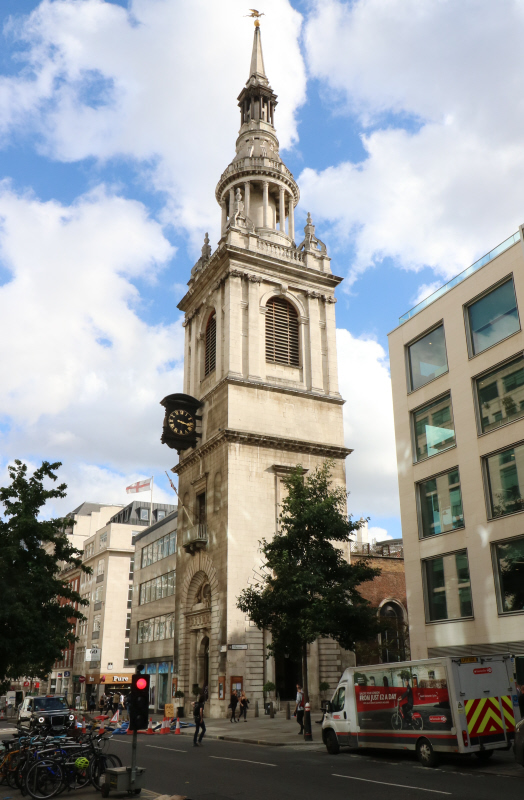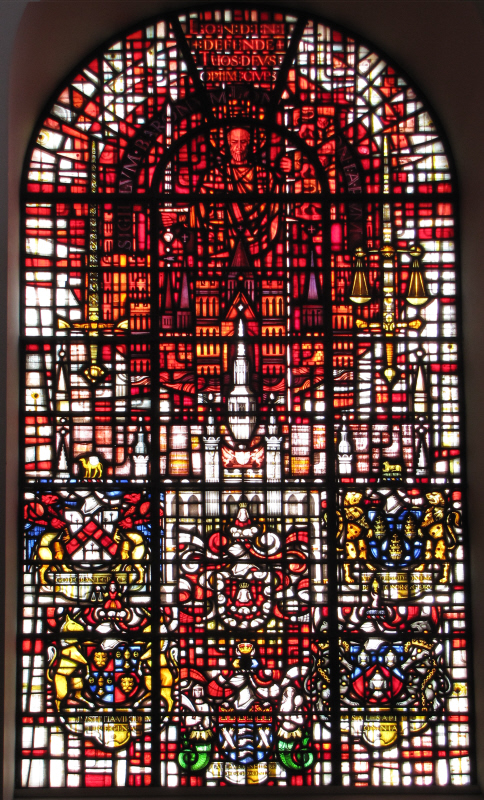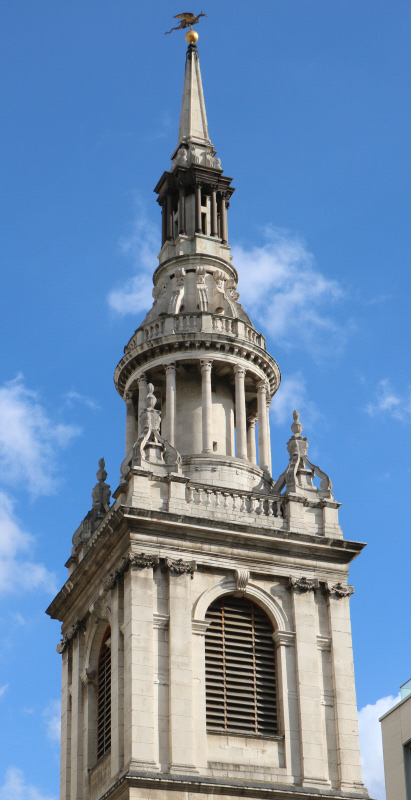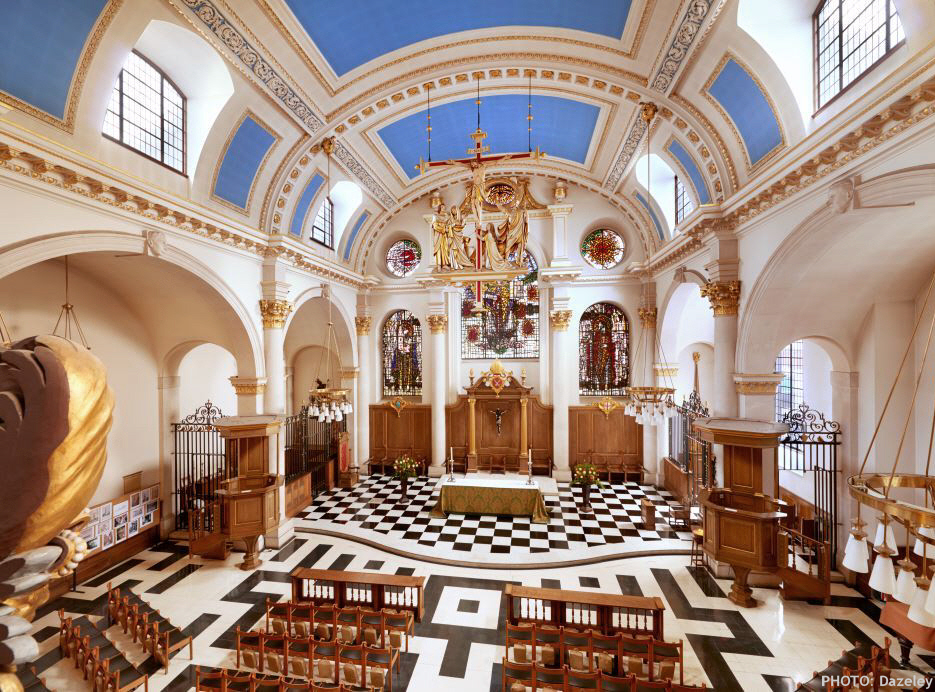St Mary-le-Bow, London
Hauptwerk (v5 and upwards) Virtual Organ
© Lavender Audio 2008 - 2024
THE CHURCH OF ST. MARY-LE-BOW, CHEAPSIDE, LONDON
St. Mary-le-Bow church steeple in its busy City of London surroundings
The church of St. Mary-le-Bow is probably best known for its peel of bells which have been woven into the folklore of the City of London for many centuries. According to tradition, a true Cockney or Londoner must be born within the sound of Bow Bells and folklore has it that these bells were also responsible for stopping Dick Whittington in his tracks, persuading him to return to become Lord Mayor of London. Anyone familiar with English nursery rhymes will doubtless know “Oranges and Lemons”, which includes the line ‘I do not know says the Great Bell of Bow’. These bells also feature across the globe on the BBC World Service, where they are used as an interval feature which serves as a radio station identifier.
Although there may have been a building here in Saxon times, the first known church on this site was built during the late 11th century. This structure included a crypt with Norman supporting arches and it is this feature which may have given rise to the “le-Bow” epithet. At the time, the church was known as Sancta Maria de Arcubus and it survived in its Norman form up until the Great Fire of London in 1666. By this time, St Mary-le-Bow was second in importance only to St Paul’s Cathedral in the city of London; it was a ‘London Peculiar’, the headquarters of the Archbishop of Canterbury, and it remains the seat of the Court of Arches. As such, following the great fire it became one of the first churches to be rebuilt and this work was carried out by Sir Christopher Wren between 1671 and 1673. Wren had great ambition for this project and wanted the tower to be the second tallest (after St Paul’s) in London. It was he who moved its position to be adjacent to the street of Cheapside and the steeple was completed in 1683. In all this rebuilding, the crypt was rather over-looked - Wren erroneously thought it dated back to Roman times - and it is this area that today offers a glimpse of what might have been during medieval times.
The church remained largely unchanged until 1941, when it was hit twice during the Blitz of World War 2. This resulted in the famous bells crashing to the ground and there are aerial photos showing immediate post-war services taking place in an open-top structure with just the walls standing. The church was eventually rebuilt by the architect Laurence King and re-dedicated in 1964. It was said of King that “he knew what a church was for” - obvious maybe, but centuries of tradition and heritage informed his sensitive and stylish rebuilding of Wren’s original work. Indeed, whilst the surviving steeple is very much Sir Christopher Wren, the main interior of the church of St Mary-le-Bow has subsequently been given - in the words of the Church Times newspaper - the Laurence King treatment.
ACKNOWLEDGEMENTS
Bringing this sample set to fruition has been a fascinating and rewarding experience,
helped by many people along the way. My grateful thanks go firstly to the rector,
the Revd. George R. Bush, who embraced the project from the outset. His ability to
influence the working patterns of workmen on the nearby busy London streets during
the overnight recording sessions was hugely appreciated! I am also grateful to the
church PCC for their agreement to the project and in particular to Antoine West for
his work in brokering the agreement. Nick Cressey and Matthew Power have been most
helpful and accommodating both during the recording sessions and in the intervening
period and I sincerely appreciate their patience during the lengthy sample set preparation
time. Finally, I’m most grateful to both Paul Koronka and Douglas Henn-Macrae for
the initial contact and for their help in facilitating this project.

A view from the organ gallery at the west end of the church, showing the fine detail of Laurence King’s post-war rebuild. Furnishings were designed by John Hayward.
The patron of the Diocese of London, St Paul, depicted in a stained glass window
also designed by John Hayward.
A closer view of the 68m high Wren steeple. This London landmark is situated half way between the Bank of England and St Paul's Cathedral.











